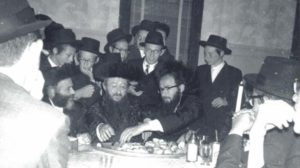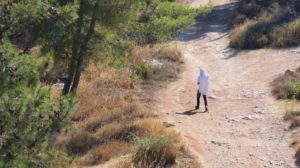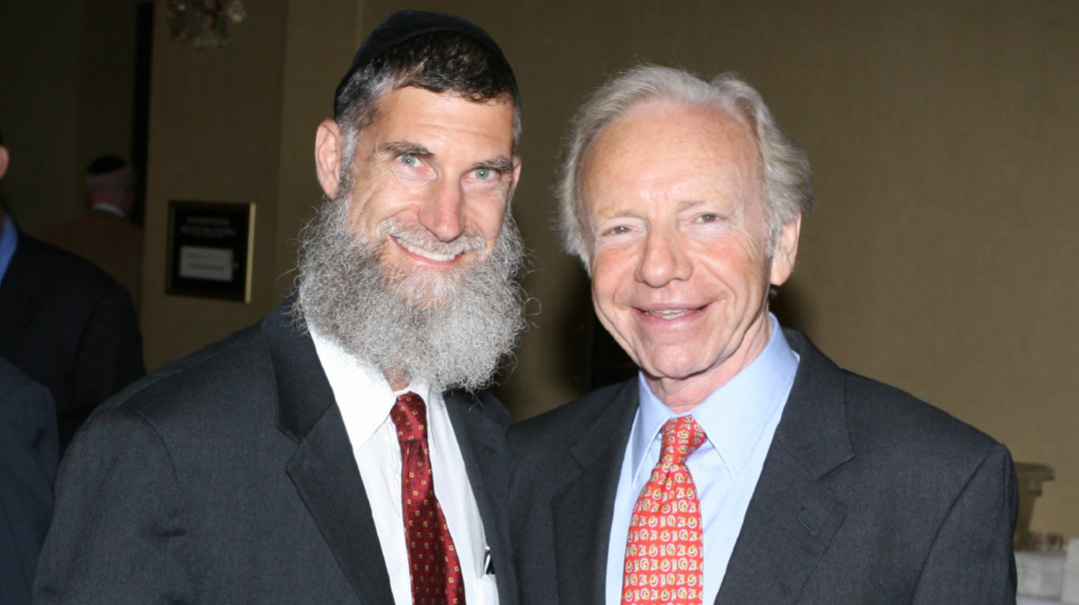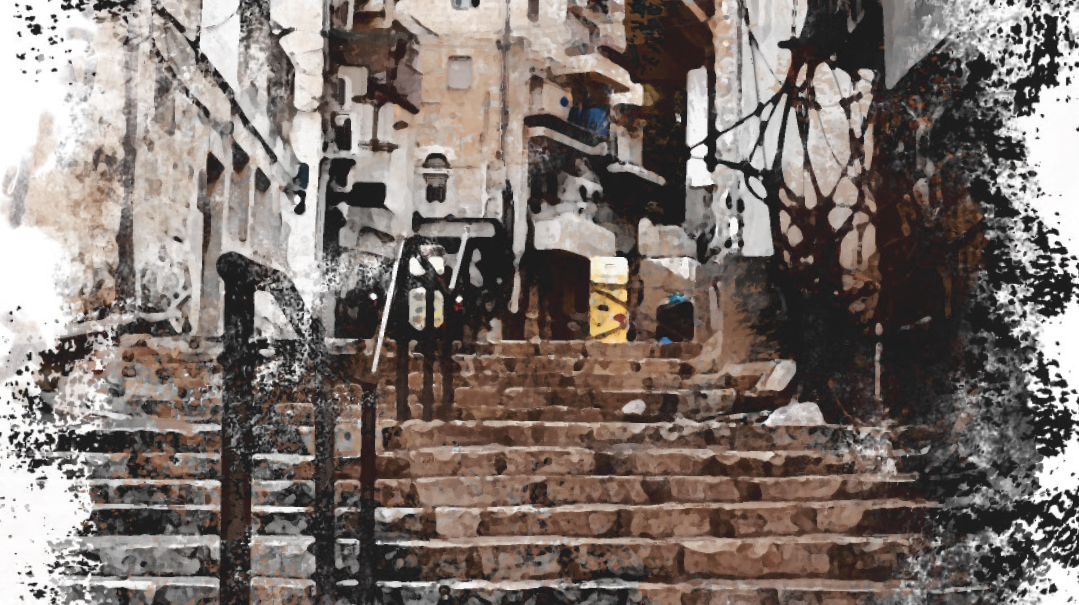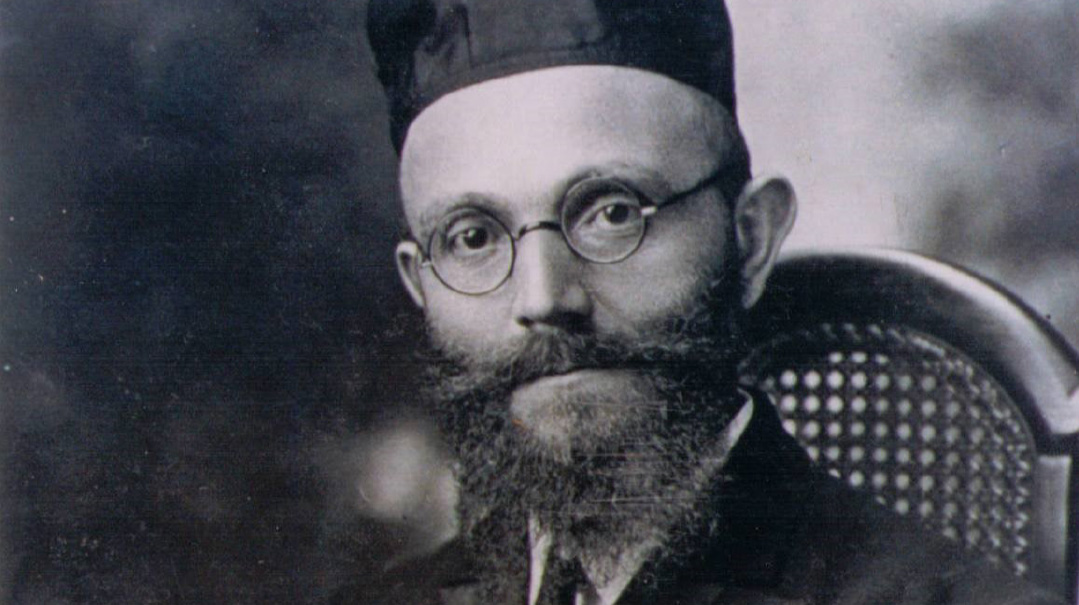Human Malachim
| March 28, 2018Laureate’s Chef Buck, is a 60-something non-Jew who will surely merit Olam Haba. He is most certainly from the Chassidei Umos Ha’olam
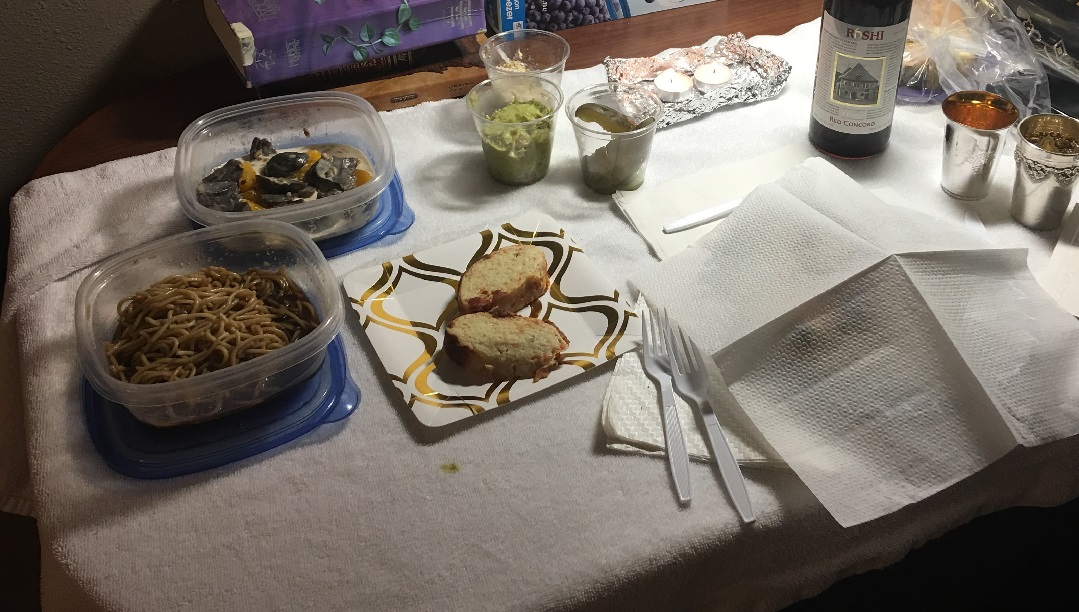
T
ulsa, Oklahoma, is a beautiful city. It’s home to some of the most impressive houses I’ve ever seen, built during the oil boom heyday. In years past, Tulsa boasted a vibrant frum community, with a shul, mikveh, and small day school. But over time, the frum moved out and what remains is a devoted group of mostly nonreligious Jews. The local supermarkets may carry a few kosher items, but mostly things that have a long shelf life, like boxed matzah. There are no reliable kosher restaurants for hundreds of miles, and anyone traveling to this area is advised to stock up on food before arriving.
Tulsa has something else: one of the country’s leading eating disorder clinics. So a year and a half ago, when our daughter was diagnosed with a complicated form of atypical anorexia with bulimic and orthorexic tendencies, her “team” advised us to send her to Tulsa for treatment.
Many of us are familiar with anorexia and bulimia (or any of the eating disorders, like anorexia nervosa or purging disorder). Simply defined, atypical anorexia with these other tendencies involves an obsession to eat a very narrow group of healthy foods, along with an emotional disorder involving distortion of body image and an obsessive desire to lose weight. Eating disorders in general are one of the frum community’s hidden diseases. We don’t like to talk about it, we pretend it doesn’t exist, and we don’t want to face that it’s more common than we’re willing to admit.
I like to joke that the first thing a frum girl going to seminary in Israel for a year is told at the airport is “you’re overweight.” Of course, the airport baggage person is referring to the overstuffed suitcases our girls schlep for their year abroad, but the play on words didn’t go unnoticed to me, and took on added significance as time passed.
Our precious daughter was diagnosed with atypical anorexia. Aside from this, she was blessed with other more minor medical issues, but when added to the atypical anorexia, these other minor issues complicated the eating disorder, and together it became thorny and dangerous. Her condition became too much for her local team to manage. It was truly scary stuff. Pikuach nefesh, no safeik. Deadly.
Back to Tulsa…
So a year and a half ago we enrolled our daughter in the Laureate Eating Disorders Program in Tulsa, Oklahoma, possibly the only one that would take a girl with these other medical complications. The clinic is located on a bucolic, multiacre campus with a top-notch hospital. The nurses and staff are not only trained to treat eating disorders, but they employ staff specialized in complicated anorexia as well. It was just about our only option.
Although I’m certain an article about our struggles would be well received, the purpose of this particular article has an entirely different goal — to describe what a human malach is like…
Let’s take the two most basic frum concerns when we find ourselves in a spiritual desert: 1. food, and 2. Shabbos.
There is some semblance of “kosher” food service at Laureate. Please understand we’re talking about an eating disorder clinic, not a hotel for Pesach. Food volumes are strictly measured, each meal consisting of a protein, a carbohydrate, and a vegetable. Girls must eat everything on their plates within a certain amount of time. Everything revolves around food, food service, portions, timing, etc.
Laureate’s Chef Buck, is a 60-something non-Jew who will surely merit Olam Haba. He is most certainly from the Chassidei Umos Ha’olam.
He purchased separate cooking utensils for kosher meat and kosher dairy food service, and — to the extent he can — prepares separate food for the kosher clientele. He is familiar with kosher certification symbols like OU and OK, but I’m sure you can understand that we’re stretching the term “kosher” here a bit, and most of you wouldn’t call this kosher for your homes — and neither would I. But at Laureate, it was like our daughter didn’t need to sacrifice her frumkeit while fighting her condition. For instance, Chef Buck would prepare eggs with hash browns and a salad for all the other girls, and then — using the kosher utensils — prepare the exact same thing for our daughter. It’s a treif kitchen, there’s no mashgiach tamidi, and I’m certain no rav would give a hechsher to this facility — but for a frum girl struggling with an eating disorder, it was truly heartwarming and amazing.
Shabbos was much harder for her. Saturday is Laureate’s “outing” day, when they go test, in real-life scenarios, the coping skills they’ve learned during the week. Our daughter wasn’t able to keep Shabbos perfectly, but she just couldn’t get in a van and go bowling or to Target. So Shabbosim were particularly difficult.
Shabbos had no Kiddush, no seudos, no challah, no zemiros… and unfortunately, a lot of TV, and a lot of boredom — and boredom is really dangerous for anyone, let alone someone in this fragile and delicate state.
In our Erev Shabbos phone call before her first Shabbos at Laureate, our daughter told us that a Chabad rav would come Motzaei Shabbos to make Havdalah for her. About an hour after Shabbos was over — she told us later — in walks this human malach, Rabbi Yehudah Weg, in a beketshe with gartel, large black up-hat, reddish-grayish beard down to his waist; his smile alone can melt an iceberg.
He schmoozed with my daughter for a few minutes before making Havdalah for her. Incredibly, Havdalah became the highlight of every Shabbos my daughter was at Laureate.
Rabbi Weg was the one who “trained” Chef Buck in kosher symbols, and who helped purchase and designate the meat and dairy cooking utensils. (Rabbi Weg stressed that the kitchen and food at Laureate have no hashgachah, and no one except actual residents should eat the “kosher” food prepared by the chef, and should consult their personal rav.)
Rebbetzin Etel Weg, from the UK, is the ultimate eizer k’negdo, and a baalas koach beyond measure. Her warmth and her commitment to hevei mekabel es kol adam b’seiver panim yafos is astounding.
My daughter spent two months at Laureate in early 2017. I visited her during the week, and she got a pass for us to go to the Wegs for dinner. Rabbi Weg was away at the time, but walking into the Tulsa Chabad Center was, for me, like a drink of water after Yom Kippur. I was parched for frumkeit, starving for ruchniyus, yearning to see another Yid.
The Wegs run the Tulsa Chabad Center on South Utica Road, about three and a half miles from Laureate. All their children are away in yeshivah or married, and this couple — these malachim — remain as beacons of ruchniyus, in a truly barren land.
Their center, on two beautiful acres, houses a shul, a mikveh, and the most wonderful, hot kosher food a starving yeshivahman could ask for. (Of course, my own eishes chayil sent me off with a suitcase full of food, but cold hard-boiled eggs, tuna, and PB&J only satisfies for so long.)
My daughter and I were greeted by Rebbetzin Weg, whose warm smile and obvious ruchniyus was amazing. She apologized for her husband’s absence, and took us through Rabbi Weg’s study, through the shul, and to the back where we would eat dinner.
Simply seeing the study with a wall full of seforim, the shul with its aron kodesh and siddurim and Chumashim, changed my whole trip. Mind you, I was only in Tulsa (this trip) for three days and two nights, but my ruchniyus withdrawal was rapidly approaching critical levels. Stepping into this tiny frum world was like finding an oasis in a desert.
Dinner was a delicious heimish affair of chicken soup, Southern fried chicken, potatoes, vegetables, tea and cake, and warm, light conversation. Rebbetzin Weg never pried, never asked any uncomfortable questions. After leaving the Chabad House that night, I felt more comfortable. If my daughter had this person — even four miles away — she would be safe.
December 2017. My daughter had been out of Laureate for seven months. At the beginning she was great. Following her meal plans, meeting her team of therapists and nutritionists, and making progress.
(Un)fortunately, along came the Yamim Noraim and Succos. Yom Tov is harder than a regular Shabbos, and three-day Yamim Tovim really put my daughter in a bad place. It was basically a month of nonstop long seudos with many guests… tough on anyone, unbearable for my daughter.
(Un)fortunately, a close relative’s family simchah was scheduled for right after Succos. Diets, and dress fittings, Shabbos with everyone eating nonstop.
This double whammy was just too much, and my daughter began losing her fight. Early December 2017 we found ourselves, once again, sending our baby to Laureate for further treatment. This kind of relapse is fairly common. Many need to come back for a recharge session. A third visit is generally not required.
We vowed this time would be different. We’d be even more involved.
As part of its program, Laureate hosts Family Week once a month, when family members attend group sessions, listen to lectures from the staff and doctors, and get to ask all the questions burning inside of us.
My daughter specifically requested that I attend January 2018 Family Week. I said sure. I’d fly to Tulsa on Tuesday, attend the program Wednesday and Thursday, and fly home for Shabbos. But my daughter insisted that the “best part” of Family Week took place Friday at noon, and would I please arrange to stay — meaning Shabbos in the desert.
Funny thing is that I was going to an eating-disorder clinic, and all I worried about for a full week before was if I had enough food for Tuesday through Sunday. Needless to say, my suitcase was overweight by about 20 pounds, having been filled with everything I would need to eat for the whole week, and Shabbos, seforim, etc.
I contacted Rebbetzin Weg in advance of my trip and she assured me she’d prepare Shabbos for me to have in my hotel room, and no, she doesn’t take money.
Erev Shabbos, after the “must attend” session of Family Week, I raced over to the Wegs to get my Shabbos meals.
When I came in I met Reb Yehudah Weg for the first time. His warmth, his smile, his concern, his holiness are all immeasurable. He was putting tefillin on a boy and reading Shema with him. It took all my strength to hold back tears of joy. I wanted to say Shema along with the boy — who was struggling mightily with the Hebrew words — but I held my tongue and simply watched in awe. Here, in the desert of Tulsa, was a small Har Sinai…
Rabbi Weg finished up and we spoke for a few minutes. This was no poshute Yid, but a true talmid chacham. His being here in Tulsa, in this place, was epically breathtaking.
Rebbetzin Weg came in and pointed to a box. “That’s yours.” Inside was a Shabbos the likes of which I certainly hadn’t expected.
My box contained: Gefilte fish, plated. Salmon, plated. Baba ghanoush and guacamole spread. Six homemade challah rolls. A plate of lox. Containers with cabbage salad, pasta salad, and Israeli salad. A plate with half a chicken, potato kugel, vegetables, covered in tinfoil. Two bags of coldcuts. A plate with assorted cakes. A bottle of wine. A plastic silver kos. Two tea-lights.
I was speechless.
Then came the coup de gr?ce. Rebbetzin Weg pointed to a plastic tub. Inside was a full-sized crockpot filled with bubbling cholent. “I hope you didn’t think you wouldn’t have chamin on Shabbos. Just plug it in on high when you get to your hotel, and switch it to low just before Shabbos. Put the plate for tonight’s seudah on top of the crockpot and it should stay hot. You can bring back any leftovers. We always have people who want them.”
It took three trips to load my Shabbos into my rented car, and three trips from the car to my ground-floor hotel room.
Once inside my room, I moved the hotel coffeemaker off the dresser, plugged in my crockpot, and put my night seudah plate on top.
I was determined to make this Shabbos the best I could. A large towel became a tablecloth over the desk. I set my table with paper goods, candles, kos, wine. Then I davened Kabbalas Shabbos out loud, sang Lecha Dodi… and cried a lot.
I sang Shalom Aleichem, bentshed my children and grandchildren… and cried a lot.
I made Kiddush, and ate a wonderful seudah, singing zemiros. Then I walked over to visit my daughter.
I slept well, and when I woke up, it was like my entire world was cholent. I was actually scared the hotel would come knocking on my door inquiring after the weird smell.
I davened a full Shacharis out loud, as if I were the shaliach tzibbur. I leined the whole parshah and haftarah.
I made Kiddush, had some wonderful homemade cake, and visited my daughter for a few hours.
Back at my hotel, I set my “Shabbos tish,” had salmon, salads, dips, and then… this was the holiest cholent I’ve ever eaten. Born of true and pure chesed, nurtured by someone so selfless and so kind, I believe every ounce was completely infused with the loftiest levels of gemilas chassadim imaginable. It tasted holy.
My daughter got special permission to join me for Shalosh Seudos. We sang zemiros. I davened Maariv and made Havdalah on two Chanukah candles. When Shabbos ended, my daughter and I packed up the leftovers, and we went to the Wegs.
We visited with Rabbi and Rebbetzin Weg for close to an hour, and every minute only amplified and magnified my amazement and luck at having had the honor to meet two such holy people. Hashem’s people are all over, just waiting to welcome another Jew and hand him a crockpot, ready to be plugged in.
(Originally featured in Mishpacha, Issue 704)
Oops! We could not locate your form.

